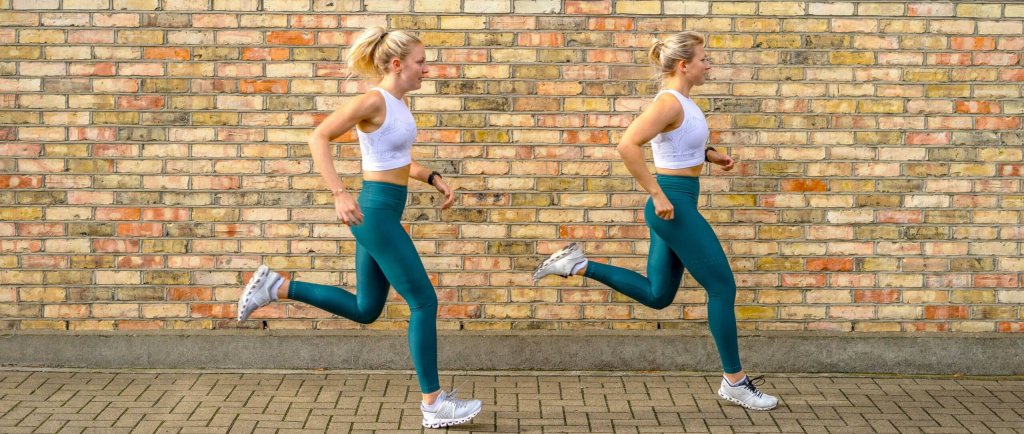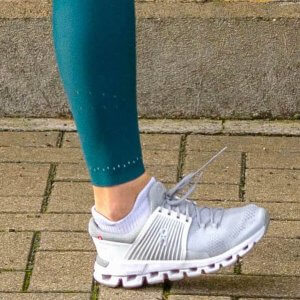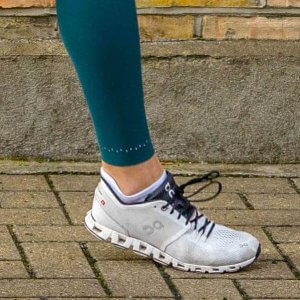Ever heard the terms, gait analysis, toe strike, heel strike, pronation, supernation, toe-off’?
The list goes on and it’s likely we’ve lost you already. We often feel like we need a degree in rocket science to analyse the way we run, in an attempt to find the shoes that best suits us.
Well, we’re hoping this blog post breaks things down to help you understand the bits that really matter when it comes to finding your silver slipper.

What is Gait?
This is the step by step process of running. The joints (foot, ankle, knee and hip and lumbar spine) in the kinetic chain play a primary role in running gait. Proper running biomechanics involves synchronous movements of all of the components of the kinetic chain.
The foot is the link between the ground and the rest of the kinetic chain. The foot has many functions to facilitate and improve gait. The foot’s motions during gait can affect other bones and joints in the lower extremities, therefore it is very important to understand the biomechanics of running gait along the entire kinetic chain to help avoid injury.
There are two main phases in running gait; stance and swing. When running in trainers the heel strike is when the heel of the shoe makes its initial contact with the floor, this is the start of the stance phase and is known as the weight loading/acceptance period. The foot has to be flexible during this stage in order to adapt to changing surfaces, and pronate (outside edge of foot raises and toes turn slightly up and out) to some extent and for the plantar fascia stretch to achieve this. Ankle dorsiflexion (toes to shin), knee flexion and hip motion occur during stance phase. Rectus femoris (quad) and gastrocnemius (calf) transfer the impact from the ankle to the knee and then the hip to act as a shock absorber. During the stance stage, the weight is transferred from the heel through the arch of the foot (midstance) and on to the balls of the toes.
If this was walking, toe-off would be the end of the stance phase and the start of the swing phase. However, during running, there is an additional float phase, where both feet come off the ground and forward rotation of the pelvis and hip flexion takes place. Around two-thirds of knee flexion is needed for the swing phase to transpire. Pre-swing occurs just after toe-off/floating; during this time the leg in stance phase is unloading body weight and preparing for the swing phase. As the toes start to rise off the floor the foot supinates (inside edge of foot raises and toes turn slightly down and in) in order to become more stable and drive the body forwards. Between pre-swing and mid-swing there is a period of acceleration, where rapid knee flexion and ankle dorsiflexion (toes to shin) take place. During the mid-swing, the ankle swiftly changes from dorsiflexion to plantar flexion (pointed toes) caused by contraction of soleus and gastrocnemius (calf). The leg in midswing passes the other weight-bearing leg that is currently in midstance. During the terminal swing phase, the leg starts to decelerate before the heel impacts with the floor again. The hamstrings lengthen and the knee starts to extend (straight leg). This is the time where the lower leg and knee are most at risk of injury. Once the heel strikes the floor the process starts again.
There are three types of foot strike in runners; rearfoot strike (RFS), midfoot strike (MFS), and forefoot strike (FFS). Each individual’s foot strike is unique and has much to do with genetics, not biomechanics. In a study, it was found that 74.7% of analysed runners were RFS, 23.7% MFS and only 1.4% FFS. They also concluded that the highest percentage of the fastest runners at the 15km mark was MFS, therefore indicating that foot strike patterns could be related to running speed. It is more common for sprinters to have a MFS to FFS and long distance runners to have a MFS to RFS.


Why would you want to change your gait?
If you are picking up repetitive injuries from running then maybe your gait is not suiting you. If you are toe striking it can lead to excessively tight calves that could lead to shin pain. If you are heel striking and are heavy-footed it could lead to knee and hip injuries.
Maybe you have changed the speed of your runs? You used to dash around an athletics track and now you’ve taken up marathons? As the above discussed, you may want to think about moving from a FFS to a MFS or RFS to get the most out of your stride.
Now, these are only statements of generalisation. Even if your gait isn’t perfect (for example E’s feet tend to pronate during the swing phase) that does not mean you must, or should change it. If you are usually injury-free and you are not trying to break a world record then your natural stride is probably A-OK.
What does gait have to do with trainer choice?
You may have heard of some trainer shops offering up a ‘gait analysis’. Now, this may just seem like a fancy ploy to make you part ways with your money. However, from experience, it can save you money in the long term because there is nothing worse than finding out that your box-fresh trainers pinch or start to make your knees ache, then only having to go out and buy another pair.
Checking if you are a RFS, MFS, FFS, pronator, supinator, neutral, distance, or speedrunner can all play a part in what you lace your feet in.
Running shoes are an investment. If you get something wrong at the bottom the issues can ricochet all the way up your body.
Now go and put your best foot forward!
TTH x
P.s Want to hear the answers to some of the questions we get asked most about kicks? Head here!


